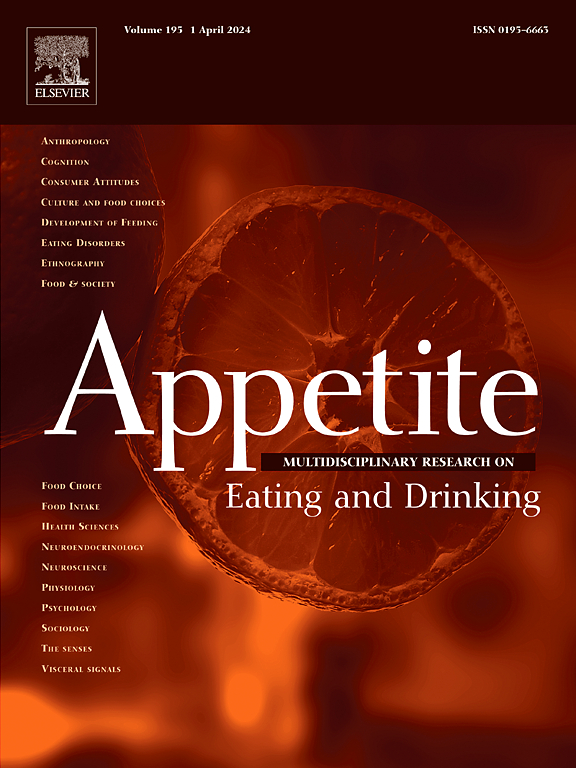Palatability changes during attenuation of flavor neophobia assessed with licking microstructure and taste reactivity
IF 3.8
2区 医学
Q1 BEHAVIORAL SCIENCES
引用次数: 0
Abstract
Novel flavors elicit a neophobic response, which attenuates as they are recognized as safe. The attenuation of taste neophobia has been widely studied through measuring overall intake, however, changes in hedonic value have not been systematically considered. We conducted two experiments to assess, in both male and female Sprague-Dawley rats, the hedonic changes across a six-day attenuation of the neophobia process using two different methods. In the first experiment, we analyzed the microstructure of licking, which affords measuring both consumption and hedonic value at the same time. This study used animals heterozygous for Cacna1c (a key genetic risk factor for multiple psychiatric disorders associated with anhedonia) and wild type controls. In the second experiment, we used the taste reactivity test. The analysis of licking microstructure, but not the taste reactivity test, was sensitive to hedonic value changes during attenuation of the neophobia. Females showed more hedonic reactivity than males in both experiments, and there was no effect of the Cacna1c manipulation. The findings highlight the importance of considering hedonic factors in the attenuation of neophobia process. The difference between the hedonic assessment methods in the sensitivity to hedonic changes during attenuation of neophobia is discussed, although this is complicated by differences in the procedures themselves (e.g. voluntary vs involuntary consumption).
用舔舐微结构和味觉反应性评估风味恐惧症衰减过程中适口性的变化。
新奇的口味会引起人们对新事物的恐惧,而当人们认为它们是安全的时候,这种恐惧就会减弱。新口味恐惧症的衰减已经通过测量总体摄入量进行了广泛的研究,然而,享乐价值的变化尚未被系统地考虑。我们进行了两个实验,用两种不同的方法评估雄性和雌性Sprague-Dawley大鼠在六天的新恐惧症衰减过程中的快乐变化。在第一个实验中,我们分析了舔舐的微观结构,可以同时测量消耗和享乐价值。这项研究使用了Cacna1c(与快感缺乏相关的多种精神疾病的关键遗传危险因素)杂合的动物和野生型对照。在第二个实验中,我们使用味觉反应性测试。在新恐惧症消退过程中,舔舐的微观结构分析对享乐值的变化较为敏感,而味觉反应性测试则不敏感。在两个实验中,女性表现出比男性更多的享乐反应,并且Cacna1c操作没有影响。研究结果强调了在减少新恐惧症过程中考虑享乐因素的重要性。讨论了享乐评估方法在新恐惧症消退期间对享乐变化的敏感性方面的差异,尽管这因程序本身的差异而变得复杂(例如自愿与非自愿消费)。
本文章由计算机程序翻译,如有差异,请以英文原文为准。
求助全文
约1分钟内获得全文
求助全文
来源期刊

Appetite
医学-行为科学
CiteScore
9.10
自引率
11.10%
发文量
566
审稿时长
13.4 weeks
期刊介绍:
Appetite is an international research journal specializing in cultural, social, psychological, sensory and physiological influences on the selection and intake of foods and drinks. It covers normal and disordered eating and drinking and welcomes studies of both human and non-human animal behaviour toward food. Appetite publishes research reports, reviews and commentaries. Thematic special issues appear regularly. From time to time the journal carries abstracts from professional meetings. Submissions to Appetite are expected to be based primarily on observations directly related to the selection and intake of foods and drinks; papers that are primarily focused on topics such as nutrition or obesity will not be considered unless they specifically make a novel scientific contribution to the understanding of appetite in line with the journal's aims and scope.
 求助内容:
求助内容: 应助结果提醒方式:
应助结果提醒方式:


